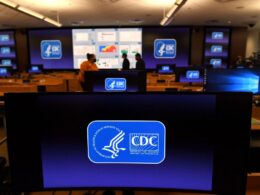Health Care Global
Leila Hawkins
21 July 2021
Citations: Kam Sidhu; CIO at Tees, Esk and Wear Valleys NHS Foundation Trust
Kam Sidhu, CIO at Tees, Esk and Wear Valleys NHS Foundation Trust, tells us about their digital strategy through the pandemic and beyond
Kam Sidhu is the Chief Information Officer at Tees, Esk and Wear Valleys NHS Foundation Trust, a mental health and learning disability trust in the north east of England. The trust’s services cover adult mental health, children and young people’s services (CAMHS), mental health services for older people and forensic services.
Sidhu’s department broadly has three areas:
- business intelligence and reporting;
- development and technical which includes everything related to IT and management of systems (including delivering computers and answering service desk calls); and lastly
- the delivery arm, covering projects, compliance and training.
Digital Oriented Strategy
The trust is in the midst of rewriting its digital strategy, with a key objective to fully exploit the technology it already has.
- Technology & Organizational Readiness
“We’re using MS Teams for example, but we probably only use a very limited functionality, and we need to fully maximise its benefits” Sidhu says.
She emphasises the importance of not focusing purely on new technology, “because often you get a mismatch between what the organisation is ready to adopt versus what it thinks it should adopt.”
- Team
Investing in the team is also key, making sure there are no gaps in people’s skills and knowledge, and ensuring they have the tech they need to build a digital workforce for the future.
- Great place to work & Great Partner
“The third element is striving for excellence” she says. “We want to be a good place to work, and a great partner.”
To develop the strategy they adopted a co-creative approach, having consultations with internal staff and external partners, as well as issuing surveys to find out what the needs of patients and care groups are.
“Obviously we have to manage national and local obligations, but we wanted to take on board people’s views and what they would like from us. It’s really a balancing act.”
The digital journey
As part of the trust’s digital transformation it is continuing its journey to add more functionality to the electronic patient record (EPR).
- The software for the EPR and
- the trust’s electronic management of prescribing and administration (ePMA) is provided by Civica, a global IT services provider that supports around 500 NHS departments.
“It’s very much a partnership” Sidhu says. “We have a co-creative, collaborative approach with them, and they’ve been very responsive and agile in terms of development. They’re also very reactive, and they’ve got a lot of expertise in the area. I think their willingness to work with us in such a collaborative way has been really valuable.”
Utilising EPRs is an important part of the NHS Long Term Plan, a 10-year strategy for the UK’s entire public health system which includes a big push to move towards digital services.
“As part of our digital strategy we completed an independent digital maturity assessment to see what KPIs we’ve reached, and what capabilities we’re delivering” Sidhu says. “We’ve chosen to have a three-year strategy, and I think that’s the right timeframe for us because technology is so fast-paced.”
“As part of our digital strategy we completed an independent digital maturity assessment”
“When I was nursing I had to go through loads of handwritten notes, but actually using an electronic system that allows you to have the right data in the right place will make the trust more sustainable in terms of releasing time to spend on patient care.”
“I also think that digital transformation and sustainability are drivers for the future. There is environmental and financial sustainability that comes from digital transformation, in terms of how we can do things differently so we’re not constantly asking for more funds” she says.
“A good example of financial environmental sustainability has been during COVID. There has been a reduced carbon footprint because there’s been less travel and therefore less cost per mileage.
I think that, although going forward there’ll be a more blended approach to how we deliver care, a lot of those aspects are going to remain.”
The effects of the pandemic
COVID-19 caused new digital services to be implemented almost overnight. But this carries the risk of leaving behind people who don’t have access to tech or digital skills.
This is a particularly important issue for Sidhu, who is ensuring that by taking a digital-first approach the trust doesn’t widen the gaps in access to technology, which are greater in the north east than in other parts of the country.
“There is a higher percentage of digital poverty here compared to the Midlands for example, where I worked previously. We need to take a blended approach to delivering digital capabilities to ensure there is equitable access.”
There are discussions ongoing with Vodafone and BT Connect to find solutions to tackle digital poverty.
While plans are still very much in their infancy, there is a pilot in the pipeline with BT Connect to help monitor patients’ health in their own homes.
With Vodafone they are exploring the possibility of enabling people to visit a Vodafone store to use the network provider’s data, stepping into a soundproofed booth where they can carry out online assessments or the learning required to have video consultations.
The trust is also offering Attend Anywhere, a project between Government, hospitals and health systems to help make video call access a normal part of day-to-day life.
This has enabled patients to continue having appointments with doctors while the pandemic has been ongoing.
The trust is one of the biggest users of Attend Anywhere in the country, with over 70,000 video appointments held since April 2020.
Additionally, tablets, laptops and smartphones have been provided for both staff and patients.
“It was very important that we weren’t isolating patients that needed access, so we’ve been delivering tablets to patients’ homes so they can conduct virtual appointments with healthcare staff.
Then, following infection prevention rules, we wipe down the tablet and move on to the next patient. It was important that we worked with what we had at the time in terms of technology” Sidhu explains.
Meanwhile their phone lines were constantly off the hook, as people called in with concerns over the new virus.
“I was very impressed with the work the team did to quickly deploy additional headsets to manage the call volumes, and then start producing interactive reports that allowed us to really drill down and find out where there were real concerns in terms of COVID numbers. It was all done very quickly.”
Using data to tell the patient story
Sidhu’s approach to using data is leveraging past and present data to build a picture of the complete patient journey, which will inform service provision and how they deliver care in the future.
Her team used data to build a digital poverty map so that areas experiencing the most difficulty can be targeted.
They also use data for trend analysis to understand what’s happening in the local population, and have issued questionnaires for people in the community to tell them what they would like to see from the trust’s services.
“For me data is about articulating a business problem, not about getting a new app. I think sometimes people have a tendency to talk to each other and one of them has a friend down the road using a specific app, and then the other person wants it without understanding the business problems.
We’ve changed our focus — now it’s about using data to find out what we need to inform care, the way the service works, and inform service provision in the future.”
Healthcare in the “new” normal
“Most organisations had been looking at doing virtual consultations before the pandemic started, but were very slow with adoption” Sidhu says.
“We’ve now got a new way of delivering care, and I believe it will be a blended approach that works for the patients and the staff.”
There are also new ways of delivering training and support, such as e-learning, which she believes will continue.
Another change is making better use of their buildings, and utilising any space that previously wasn’t in use.
“The private sector is much further ahead in terms of hot desking, so we might look at that. But some of the buildings have been left empty for probably a long time in certain parts of the trust. We want to look at how we use these differently.”
But possibly the biggest change has been to ways of communicating.
“The way we are communicating now was very alien to a lot of people, but it’s become very normal now.
My mother who is in her 70s now knows how to use Whatsapp video, and I’m so glad I taught her because I’m in the north east of England while she’s in the Midlands.”
“I do think these new forms of interaction are here to stay, but I think the new normal is very much about a blended approach. Ultimately it has to be about patient choice.”
Originally published at: https://healthcareglobal.com












